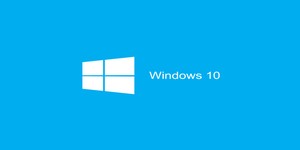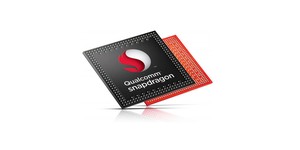
Qualcomm has confirmed it is forging ahead with plans to launch Windows 10 devices running on its ARM-architecture processors, naming Asus, HP, and Lenovo as the first to market with Snapdragon 835-based designs.
Announced by Qualcomm and Microsoft back in December last year, and not to be confused with Microsoft's demonstration of Windows Server for ARM from March, Windows 10 on ARM is more than a rebirth of the failed Windows RT: Rather than a separate build of Windows running only selected software which has been specifically ported, Windows 10 on ARM is promised to be a full-fat Windows 10 version complete with support for legacy applications courtesy of a hardware translation layer which will convert x86 instructions to their ARM equivalents on-the-fly. It's not the first time such a thing has been tried - x86 emulators were a common sight on non-x86 platforms when the IBM Personal Computer began to take significant market share, and Apple famously used a translation layer dubbed Rosetta to allow backwards compatibility during its transition from the Power architecture to x86 - but a significant move in the ARM architecture space and one which could hopefully bypass the flaws that sank Windows RT.
While both Qualcomm and Microsoft were vague on precisely when the first Windows 10 on ARM devices would be reaching the market, the pair have jointly announced the first partners, meaning a launch is likely just around the corner. Speaking during Computex 2017, Qualcomm confirmed it had teamed up with Asus, HP, and Lenovo on the production of convertible devices running Windows 10 on its Snapdragon 835 system-on-chip (SoC). Each will also include Long Term Evolution (LTE) cellular connectivity, provided via the X16 LTE modem built into the Snapdragon 835 as standard.
'The legacy computing model no longer works for today’s consumers, who don’t want heavy, tethered-to-a-power-cable laptops with a frustrating number of accessories,' claimed Qualcomm executive vice president Cristiano Amon. 'With compatibility for the Windows 10 ecosystem, the Snapdragon Mobile PC Platform will enable Windows 10 hardware makers to develop next-generation device form factors and deliver unparalleled anytime, anywhere creation experiences with up to gigabit-class LTE connectivity.'
The devices will be branded 'Always Connected PCs' as a result of the integrated LTE connectivity, Microsoft has confirmed. Thus far, no partner companies have come forward with launch dates, prices, or final specifications.
Announced by Qualcomm and Microsoft back in December last year, and not to be confused with Microsoft's demonstration of Windows Server for ARM from March, Windows 10 on ARM is more than a rebirth of the failed Windows RT: Rather than a separate build of Windows running only selected software which has been specifically ported, Windows 10 on ARM is promised to be a full-fat Windows 10 version complete with support for legacy applications courtesy of a hardware translation layer which will convert x86 instructions to their ARM equivalents on-the-fly. It's not the first time such a thing has been tried - x86 emulators were a common sight on non-x86 platforms when the IBM Personal Computer began to take significant market share, and Apple famously used a translation layer dubbed Rosetta to allow backwards compatibility during its transition from the Power architecture to x86 - but a significant move in the ARM architecture space and one which could hopefully bypass the flaws that sank Windows RT.
While both Qualcomm and Microsoft were vague on precisely when the first Windows 10 on ARM devices would be reaching the market, the pair have jointly announced the first partners, meaning a launch is likely just around the corner. Speaking during Computex 2017, Qualcomm confirmed it had teamed up with Asus, HP, and Lenovo on the production of convertible devices running Windows 10 on its Snapdragon 835 system-on-chip (SoC). Each will also include Long Term Evolution (LTE) cellular connectivity, provided via the X16 LTE modem built into the Snapdragon 835 as standard.
'The legacy computing model no longer works for today’s consumers, who don’t want heavy, tethered-to-a-power-cable laptops with a frustrating number of accessories,' claimed Qualcomm executive vice president Cristiano Amon. 'With compatibility for the Windows 10 ecosystem, the Snapdragon Mobile PC Platform will enable Windows 10 hardware makers to develop next-generation device form factors and deliver unparalleled anytime, anywhere creation experiences with up to gigabit-class LTE connectivity.'
The devices will be branded 'Always Connected PCs' as a result of the integrated LTE connectivity, Microsoft has confirmed. Thus far, no partner companies have come forward with launch dates, prices, or final specifications.

MSI MPG Velox 100R Chassis Review
October 14 2021 | 15:04








Want to comment? Please log in.